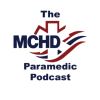Hydroxycholorquine has been the subject of constant discussion and debate in medical circles, as well as in the lay press, for the past few weeks.
As the COVID-19 pandemic has worsened, physicians and the public alike have placed their hopes in various potential therapeutic possibilities. These have ranged from newer anti-viral medications to convalescent plasma treatment, which has been around for over 100 years.
Hydroxycholorquine (HCQ) surged to the forefront after a recent French study made claims of “a 100% viral clearance rate.” This hysteria led to a run on pharmacies around the world by people attempting to obtain the medication. Many issues have since been raised related to the study’s research methodology and quality, but the craze was on.
Hydroxychloroquine (Plaquenil) has been used for decades as an anti-inflammatory in auto-immune conditions such as systemic lupus erythematosus and rheumatoid arthritis. It blocks cardiac sodium and potassium channels which, in a toxicity situation, can lead to QRS and QTc prolongation respectively.
EMS providers know the danger of QTc and QRS prolongation – ventricular tachycardia and cardiac arrest. HCQ can also cause CNS depression and refractory seizures as well. If those problems weren’t enough, severe shock can also be present along with nausea and vomiting, and electrolyte abnormalities. To make matters even worse, this severe symptomatology can progress quite rapidly, and an ambulatory patient can progress to cardiac arrest within a matter of minutes after a toxic ingestion of HCQ. The cardiac effects can be exacerbated if HCQ is taken with other medications that prolong the QTc (such as azithromycin). For these reasons, at this time, HCQ use is not recommended outside of clinical research trials.
EMS treatment of hydroxychloroquine toxicity
When encountering a patient suffering from hydroxychloroquine toxicity, prehospital providers must be proactive with close cardiac monitoring of these patients and preparation for defibrillation (if needed) is key. The clinical decline in HCQ toxicity can be quite precipitous, so don’t let the well appearing patient reassure you. Sodium bicarbonate and magnesium sulfate are also indicated if ventricular arrhythmia occurs. Benzodiazepines, likely in high doses, are key if the patient seizes and we must be prepared to manage these airways as the patients can be markedly altered.
It is human nature to want to cling to hope in a situation like the COVID-19 pandemic, where it seems that we know so little about the disease. However, healthcare can’t throw out tenets of solid evidence-based medicine due to fear. Hopefully, proper randomized studies will eventually find effective treatments for COVID-19, but until then, we must be cautious. Medical history is littered with theoretically logical medications that ultimately caused harm when used in actual patient care. Unfortunately, the HCQ craze is loose and emergency providers now have to be on the lookout for the toxic presentations associated with ingestion and overdose.



